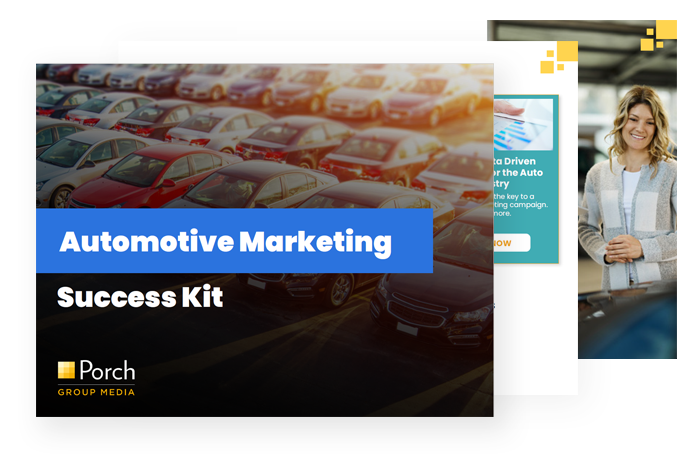No matter your industry – your company’s reputation matters. This may be stating the obvious but the concept of the customer experience has become so huge that by 2020, many industry experts believe that companies will be competing solely on customer experience. When it comes to selling cars, dealerships already have an uphill battle to climb. Most consumers view the car buying experience as less than ideal. Although this is putting it mildly – you have probably read the research citing that people would rather go to a dentist than a car dealer.
DrivingSales conducted a consumer experience study based on a 16-month-long ethnographic and quantitative research initiative with over 1,300 shoppers and buyers. Some key findings include:
- 99 of 100 automotive shoppers begin their purchase journey expecting it to be a “hassle” driven in large part by their experience, and that of friends/family, with retailers seeking to control the buying process to the retailer’s objectives
- Shoppers are exposed to dozens of conflicting influences making them wary and distrustful, driving them to seek what they perceive as objective information from trusted sources – primarily trusted friends and family and independent third-party sites
- Shoppers are keeping dealers and salespeople at a proverbial arm’s length until late in the purchase process. When they’re ready to interact, 61% initiate contact by walking into the dealership without prior contact
- This distrust puts the consumer on a hair trigger as they engage with the dealer, 50% will walk out of a dealership if the dealer requires a test drive before providing a price, 43% if personal information is required
- 56% of shoppers said they would buy more often if the dealership process was not so difficult – the impact of this retail aversion was quantified at a potential increase in sales volume of 24%
Another study by Total Dealer Compliance (TDC), a car dealership compliance-auditing firm, looked at the importance of the complaint resolution process as part of the overall experience. The survey found that over 55% of consumers who have submitted a complaint were dissatisfied with the resolution provided. “When asked what the biggest pain point was when submitting a complaint to a car dealership, over 50% said it was the car dealerships’ obvious lack of desire to resolve the issue.
With the industry recognized for unfair, deceptive, and abusive practices, nearly 80% of respondents believe that customer satisfaction is of utmost importance to the dealership when they have a clearly stated complaint resolution process.”
Additional study findings include:
- Over 30% of consumers have submitted a complaint to a dealership.
- Of those who have submitted a complaint, over 55% of consumers were dissatisfied with the resolution provided.
- Nearly 60% of consumers are more likely to buy a car if there is a clearly stated complaint resolution process.
- Nearly 80% of respondents think that customer satisfaction is of utmost importance to the dealership if they have a clearly stated complaint resolution process.
- Over 50% of consumers said that the biggest pain point when submitting a complaint to a car dealership is the dealerships’ obvious lack of desire to resolve issue.
- Nearly 75% of consumers submit complaints by calling their dealership over submitting a complaint online.
Fuel Better Experiences with an Integrated Customer View
Dealerships must work to understand their particular customers’ pain points and implement strategies to resolve these gaps in the overall experience. However, mitigating bad experiences is not enough to sustain a competitive advantage. Consumers expect to be wowed and they will choose the dealership that best caters to their expectations.
Providing these integrated, end-to-end experiences begins – and ends – with the customer. From the initial point of contact with your dealership, throughout the sales process and post-sales communications, every touch point must be optimized. Providing a highly personalized experience in which your customer feels valued means using data insights to establish a comprehensive customer view.
Integrate your first-party data such as contact details, customer service records, website inquiries, and so forth with additional third-party data elements to create a rich customer view. These consolidated insights will enhance your knowledge of the customer journey in order to deliver personalized and relevant campaigns and prevent break-downs in the customer experience.
Consider adding insights such as :
- Automotive marketing data such as make, model, and year of the vehicle your customers or prospects are currently driving, or insights into engine size, fuel type, and engine cylinders.
- Contact details such as emails and phone numbers.
- In-market shopping behaviors.
- Demographics such as income, marital status, occupation, hobbies, and lifestyle.
- Life event triggers such as new teen drivers or new movers
Consumers constantly leave clues as to who they are, what they like, and what they’ll buy next. When these insights are gathered and analyzed, you have the opportunity to personalize your outreach and target new customers before the competition may even be aware that they are in the market or what may influence them to purchase. And with 86% of consumers stating that personalization plays a role in their purchasing decisions (Infosys), taking the time to develop a personalized customer experience will pay off every time.







